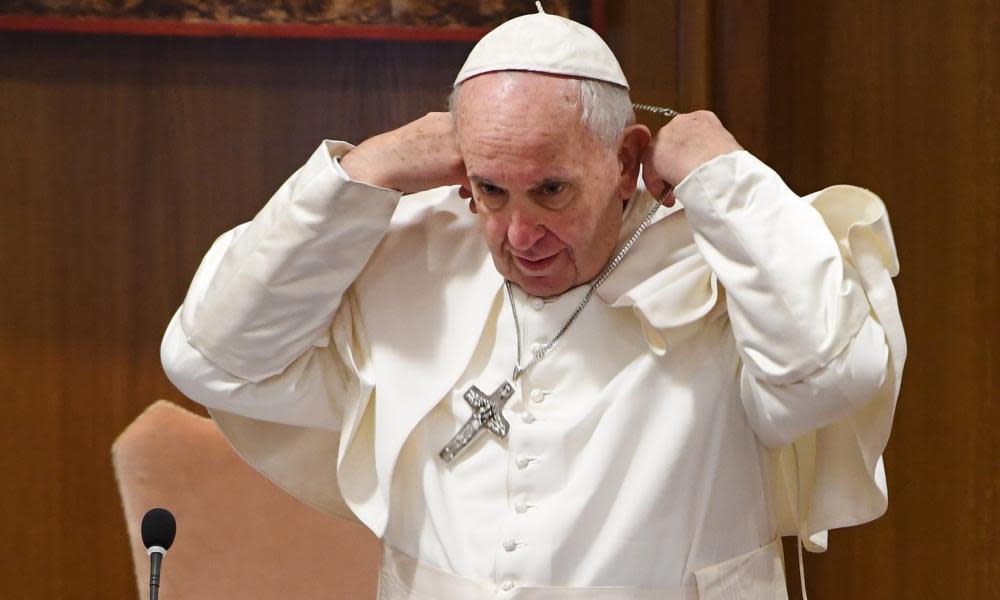The Guardian view on the Catholic church: must do better

On Wednesday night another statue of a former hero was pulled down in eastern Europe. The late Fr Henryk Jankowski had been placed on his pedestal as the chaplain to the Solidarity movement in Gdansk in the years when Polish Catholic workers helped bring down the Soviet empire; he has now been toppled because of multiple allegations of child abuse. The church defrocked him in 2005, five years before his death, but the activists accuse it of “systematic complicity”.
The bishops and cardinals meeting in Rome to decide what to do about sexual abuse by the clergy should remember that statue, pulled down at the scene of one of the church’s greatest triumphs. The Catholic church has two problems about sexual abuse. The first is that it happens; the second is that it is covered up. Both these are shared with other institutions, especially religious ones. The combination of spiritual authority with political power is dangerous.
The Catholic church has more of both than most of its rivals, and so it has a larger problem. Nonetheless, every faith, from southern Baptists to western Buddhists has had to come to terms with shaming scandals in the last decade, as has the Church of England. And if the scandals have not reached much of the developing world yet, that is only because neither the abuse nor the cover-ups have yet been exposed there.
One purpose of the meeting is to get ahead of that development, and convince the bishops whose national churches have not yet been damaged by the scandal that this is a crisis that will soon come to them. Many are reluctant to believe this. That is not the only factor making for bad PR and continuing abuses. Pope Francis, himself a bishop from the southern hemisphere, has had to learn a lot and quickly about the problem, and failed several of the tests on the way. He seems not to have taken sufficiently seriously the allegations against the now defrocked Theodore McCarrick, once a cardinal and one of the most powerful men in the American church; he reacted with initial scorn to accusations of a cover-up by a Chilean bishop he had appointed, later apologising for “grave errors” of judgment; he angered and disappointed many of the campaigners who had hoped he would clean up the accumulated mess by failing to back them in their struggles with reactionary elements in the Vatican.
All this comes at a time when his enemies in the Vatican and outside it have been trying to weaponise the crisis against him. Rightwingers wrongly blame both the abuse and the cover-ups on the existence of gay networks in the clergy. Francis and his supporters blame “clericalism” and the arrogance of power.
Any solution to the problem is going to require a slow process of systematic reform of laws and a change of hearts. There is no simple reform that would solve the problem, not even the abolition of compulsory celibacy: denominations with married clergy have just as many scandals about abuse.
The certain outcome of this meeting will be inspiring and doubtless sincere expressions of repentance and determination to do better. Less likely but more useful would be a clear statement that bishops are responsible for the behaviour of their priests, and will be punished if found to be covering it up. Least likely, but ultimately essential, will be a real change of heart and of organisational culture, so that the victims, who are usually lay people, will be placed at the centre of the church’s concerns, as Francis has frequently promised. That would be a true revolution.

 Yahoo News
Yahoo News 
